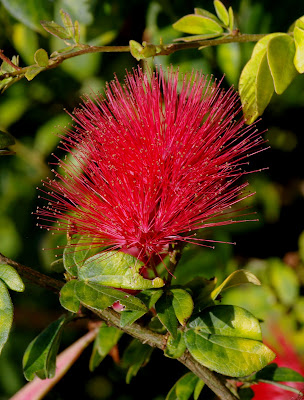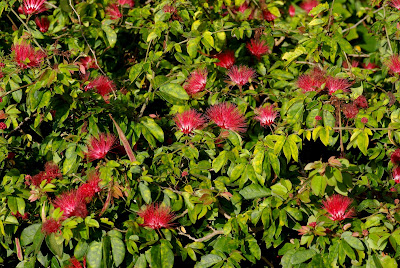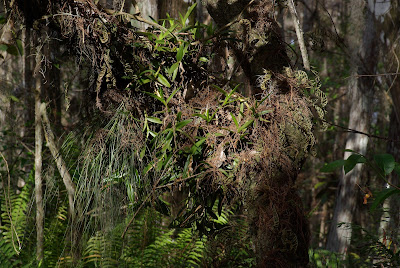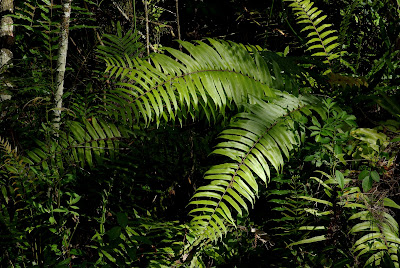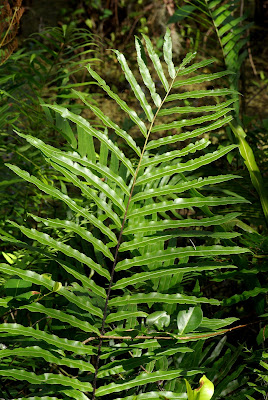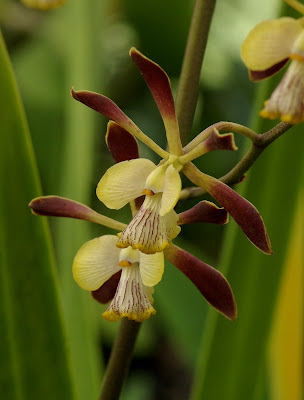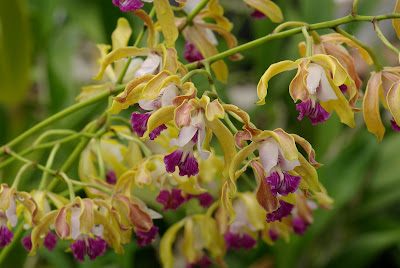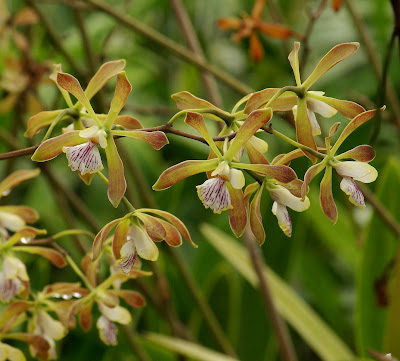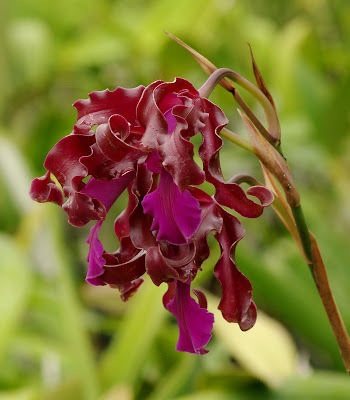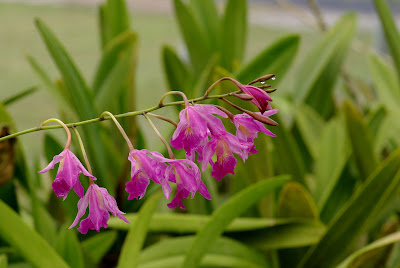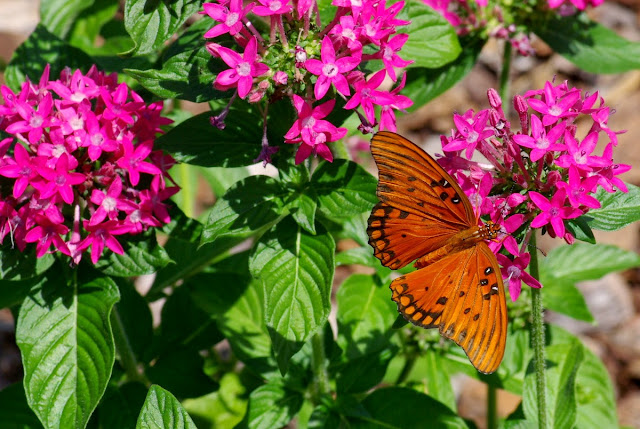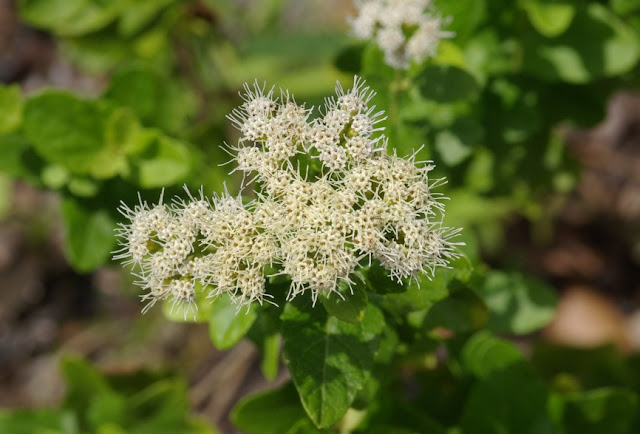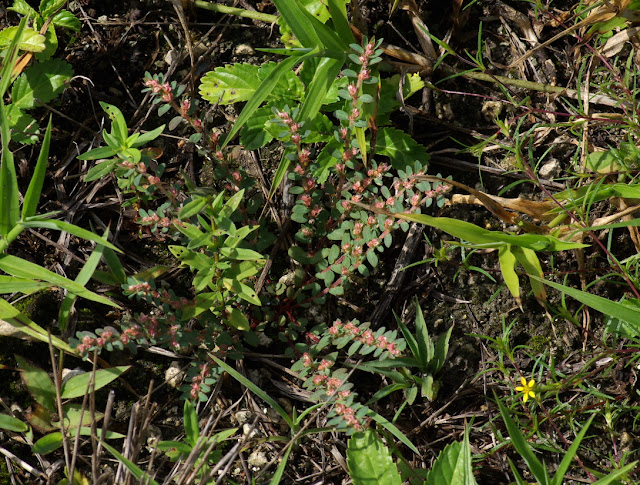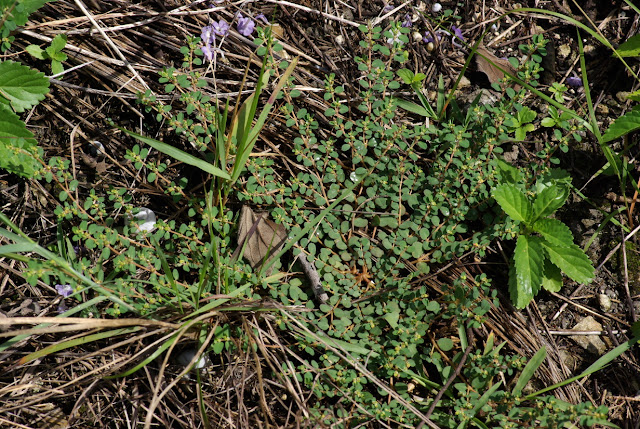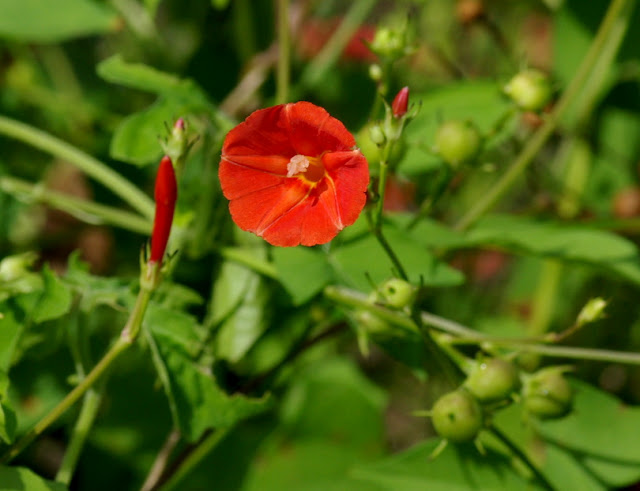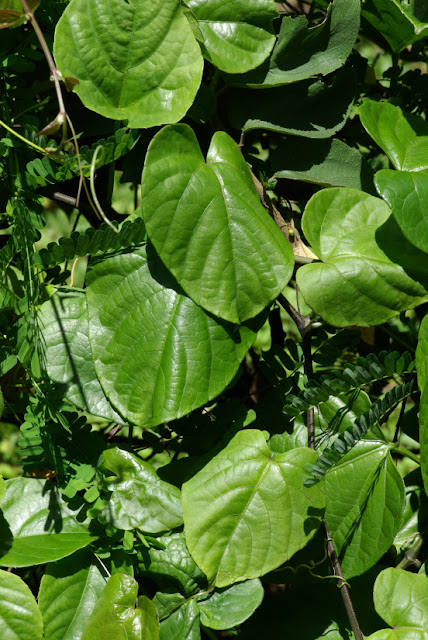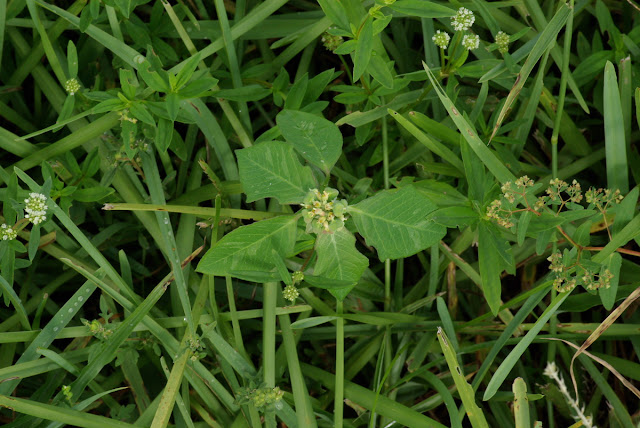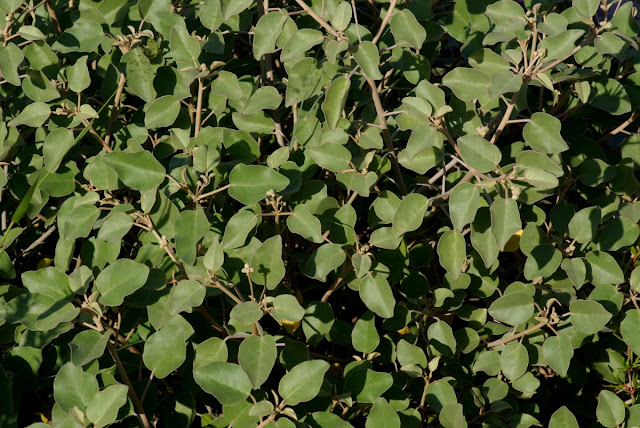 |
| A fully mature, densely branched plant about three years old. It is approximately 2.5 feet tall and about 3.5 feet wide. |
Croton punctatus is an easily grown, but short-lived, shrub that reaches full maturity in 2–3 years and then begins a slow decline as it devotes itself to maximizing flowering and seed production. Its most distinctive feature is its leaves, which are densely coated with silvery scales resulting in leaves that vary in color from grayish green to silvery white. Young leaves have the densest coating of scales and can be so shiny and white as to appear to be made up of a metal such as aluminum. This is reflected in one of its common names, silverleaf croton.
 |
| A close-up of the leaves on a young, 6-month-old plant just beginning to flower. |
Gulf croton naturally occurs in coastal strand and beach dunes along the Atlantic coasts of the Carolinas, Georgia, and Florida, from where it extends to the Gulf states and Cuba. It well lives up to its name, gulf croton, because it occurs along coasts nearly throughout the entirety of the Gulf of Mexico, from the western Florida coast to Texas and on to Mexico, Central America, and northern South America (Gann et al. 2016). In Florida, it has been recorded all along our coastline but it is apparently absent, or at least not recorded, from the Florida Keys, the coasts of mainland Monroe County, and Florida's west coast from Wakalla County to Pasco County (Wunderlin et al. 2016). Surprisingly, there are disjunct occurrences from the landlocked counties of Dauphin and Philadelphia in Pennsylvania (USDA 2016). All United States occurrences of gulf croton are in coastal counties except for the two Pennsylvania counties and Leon County in Florida and Brooks County in Georgia.
Its natural habitat provides clear clues to its cultivation and, as is the case with most beach-dwelling plants, it requires well-drained soil in a location where it receives full sun for most of the day. It is extremely drought tolerant once established but, for the healthiest, most densely branched, and beautiful plants, supplemental water should be provided during extreme or very long dry spells. In garden settings, it may be used as an accent plant or as a tallish groundcover. It is also useful as a small shrub in wildflower gardens or butterfly gardens where its fragrant flowers attract a wide variety of native flower-visiting insects. But gardeners must bear in mind that it is short-lived and it is rare for individual plants to last more than three or four years. Ample moisture produces big, beautiful plants but these tend to be the shortest lived, whereas plants grown under drier, leaner conditions tend to be the longest lived. However, declining plants are soon replaced by self-sown seedlings if the garden has open, sunny areas in which the seedlings can establish themselves. Propagation is by seeds or cuttings but seeds are difficult to gather because the capsules open ballistically and hurl the seeds far from the mother plant. I have never tried to grow gulf croton from cuttings because it abundantly self-seeds in my garden, but local native plant enthusiast, Ryan Leavengood, has had good success rooting cuttings of gulf croton in perlite and a rooted cutting from Ryan was the source of my original plant.
 |
| The flowers are not large or showy but they are reportedly fragrant and they attract a wide variety of insects. The flowers are either male or female but both genders are carried on the same plant. |
Because it naturally grows in coastal strand and beach dunes, gulf croton is well adapted to the stressful environment of saltwater coasts and it is resistant to intense sunlight, strong winds, sand scouring, burial, high soil temperatures, low nutrient levels, and the occasional salt spray (Lonard & Judd 2009). As a consequence of its adaptation to life on sand dunes, it is valuable in coastal habitat restorations where it is an important element of the sand dune vegetation and helps to both form new sand dunes and reduce the erosion of established dunes.
Besides gulf croton and silverleaf croton, it is also known as beach-tea, which I assume is a reference to its previous use as a medicinal tea; however, I have not been able to locate any information on medicinal uses. Interestingly, Lonard & Judd (2009), who prepared a thorough review of Croton punctatus, were also unable to find any information on this plant's medicinal uses.
Note: Gulf croton is a true croton in the genus Croton, a large genus of about 750 species found nearly throughout the world but concentrated in the tropics and subtropics. The ornamental croton with variegated leaves that is a ubiquitous tropical landscape cliché, is in the same family but is a member of the genus Codiaeum.
 |
| A native bee visits the flowers of Croton punctatus. The flowers are attractive to a wide range of native pollinators. |
References:
- Gann, G.D., M.E. Abdo, J.W. Gann, G.D. Gann, Sr., S.W. Woodmansee, K.A. Bradley, E. Grahl, and K.N. Hines. 2005–2016. Natives For Your Neighborhood: Croton punctatus. Institute for Regional Conservation. Link visited 8 June 2016.
- Lonard, R.I. and F.W. Judd. 2009. The biological flora of coastal dunes and wetlands: Croton punctatus Jacquin. Journal of Coastal Research 25(1): 23–29. doi: http://dx.doi.org/10.2112/07-0933.1
- USDA. 2007–2016. The PLANTS Database. Baton Rouge: United States Department of Agriculture National Plant Data Center. Link visited 8 June 2016.
- Wunderlin, R.P., B.F. Hansen, A.R. Franck, and F.B. Essig. 2016. Atlas of Florida Plants. Institute for Systematic Botany, University of South Florida, Tampa. Link visited 8 June 2016.
